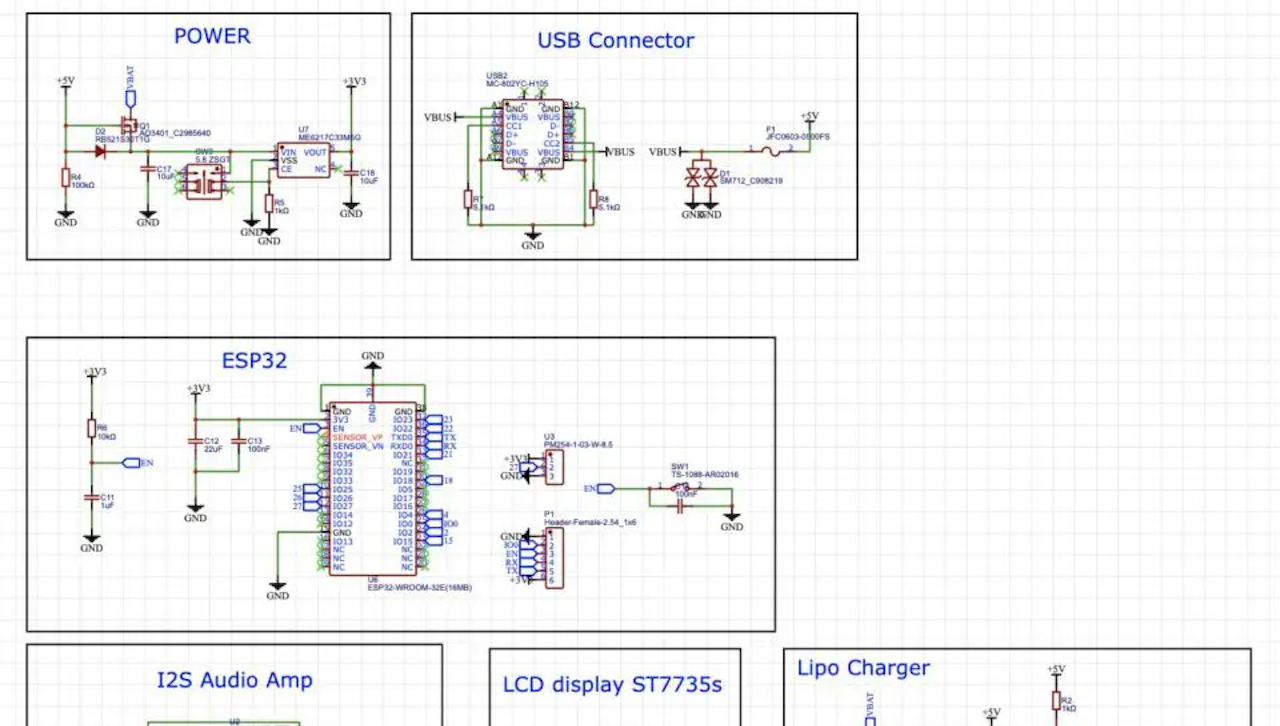Hello everyone.
Mia, this is Yoshinaga, the developer.
In a previous article here, I described the impetus for the development of Mia.
In this issue, I would like to describe the design of electronic circuits, which was a difficult task in the actual development of the hardware.
What should I study first?
Now, I decided that I wanted to make a talking, cat-like robot that speaks in various personalities and dialects, but I had no experience in full-scale hardware development, so I started by figuring out where to start learning and developing.
In medical school, of course, I learned only medicine, so I have little knowledge of analog electronic circuits.
Mia is made with a self-made board called ESP32, which uses a module that enables Wi-Fi communication. What can it do? I bought this starter kit and started by assembling the simplest program to make the LEDs twinkle, known as L-Tchika.
In the beginning, I bought wiring and speakers based on a beginner’s board called a “development board,” and while it was a mess, I managed to get the program to work by connecting it all together.
The actual diagram is shown here, where the wiring is tangled and chaotic.

Started making home-made boards in earnest, but failed about 10 times
However, of course, the product could not be released in its current state, so it was necessary to clear up the tangled wiring by creating a unique base for Mia.
So, from about July 2023, I had to learn to draw analog electronic circuit schematics from scratch. Eventually, I managed to assemble the following circuit, but I failed about 10 times before I got to this point.

Here is a home-built board that went through more than 10 rounds of trial and error from development board to product. You can see that the board is gradually getting smaller and smaller despite repeated failures.

In the case of software, you can check the operation immediately after writing the code and uploading it, but in the case of hardware, after drawing the circuit diagram, you place an order with JLCPCB, a Chinese manufacturer that produces circuit boards, and you receive the order about 10 days later. It was quite difficult to identify the cause of the problem, and I struggled more than I had imagined.
In the end, the homebrew board was able to be miniaturized to about the same size as the AirPod case, and the Mia has become much smaller and cuter, palm-sized, from its initial large and slightly horrifying design.
It took about a year and two months from conception to release (although we could have released the product a little sooner if we had more knowledge of analog electronic circuits and board design), but we are glad that we managed to release the product.


P.S. A detailed article on how to design and commercialize your own printed circuit board from a development board can be found here.




